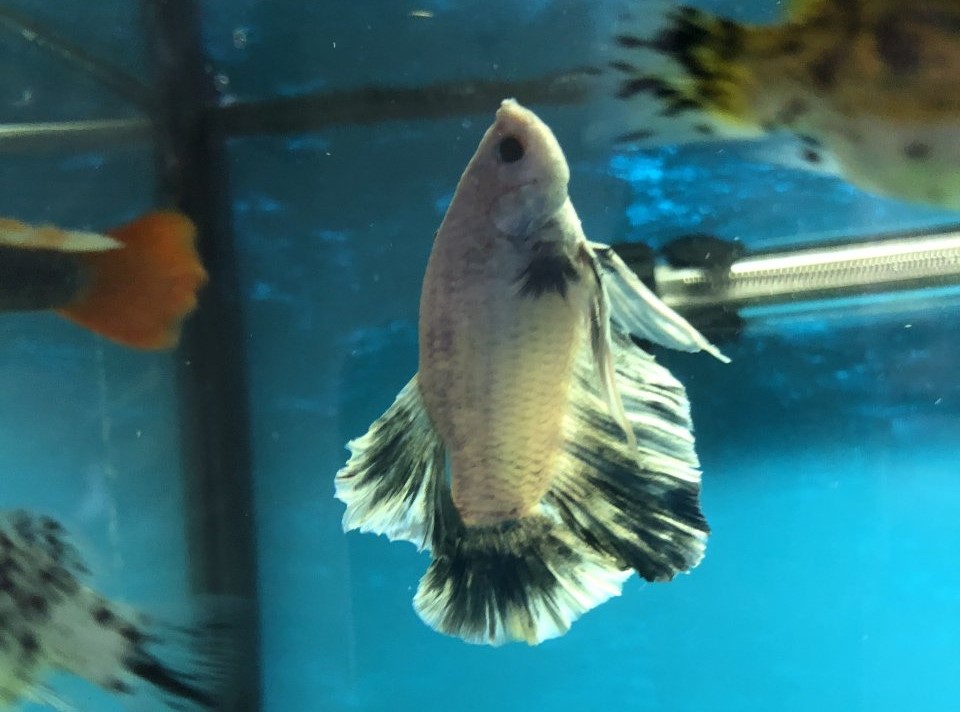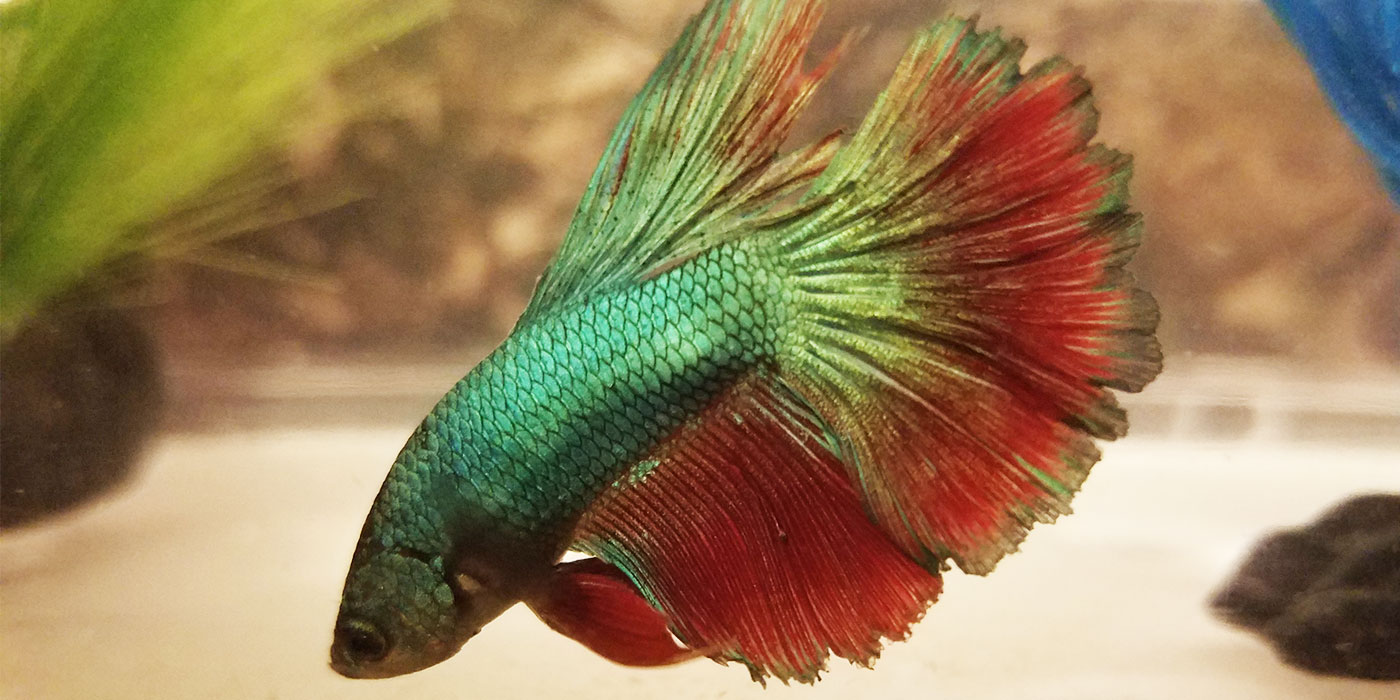Sometimes you may see your Betta fish floating vertically inside your aquarium. This is known in aquatic circles as the vertical fish death hang.
As you can probably guess from the name itself, a Betta Fish Vertical Death Hang can be a very serious situation for your Betta fish to be in. It can mean many things, like your Betta being sick, injured, or even dying.
In this article, will discuss what the betta fish vertical death hang is, what causes it, and what you can do about it in case you see it happening to your precious betta fish.

Table of Contents
What is the betta fish vertical death hang?
The name actually describes the situation pretty well. In a Betta fish vertical death hang, you’ll notice your Betta fish hanging in a vertical manner inside the tank.
At times, the fish may move away from this position but then go back after just a few minutes or hours. You may also notice it happening multiple times in a week, with each duration getting longer and longer as the situation worsens.
Why is my betta fish hanging vertically?
Unfortunately, if you see your Betta fish hanging vertically, it’s not a good sign. Betta fish will only do this if they have some untreated sickness or if they’re not feeling good.
So, if you see your Betta in an upside-down position, you have to attend to it as soon as possible, or it could lead to something much worse.
Here are a few common reasons for the betta fish vertical death hang.
- Injuries or diseases. The first reason could be an unknown injury or disease. An injured or sick Betta fish will hang vertically since it’s not feeling well. Check for other signs of diseases.
- Small tank. Another reason is that the tank is too small. Betta fish need at least 5 gallons to be happy, and ideally 10 gallons. A small tank will make the Betta more prone to diseases since it’s much harder to keep clean than a larger tank.
- Poor water conditions. This could mean anything, from dirty water, to a low pH level, to high ammonia levels.
- Cold water. Betta fish need to stay in warm water, not cold water. This should be around 78F to 80F. Any colder than this and the Betta fish will be too cold.
- Overeating. Like most other fishes, it’s very easy for Betta fish to overeat. After all, they eat everything that you give them, or at least, try to.
What are the signs of a sick betta fish?

The specific signs of sick Betta fish depend on the particular sickness that they have.
For instance, if they have fin rot, their tail or their fins will look like they’re rotting. If they have ich, you’ll see white spots on your Betta’s body. And if they have velvet, you’ll notice them scratching their bodies on various objects inside the tank. They will also stop eating since they’re so busy trying to scratch off the itch.
Meanwhile, a Betta fish who’s suffering from an injury may have a gash on its body or even bruises.
What does a betta fish look like when it’s dying?
It may be sad to think about, but it’s important to look out for signs that your Betta fish is dying.
Keep in mind that, in some cases, you can still help it avoid death, even if you already see these signs.
- Your Betta fish may spend more time sleeping or resting.
- It may spend more time hiding, as well. Even if you put your finger on your tank, your Betta doesn’t move to greet you and just continues hiding.
- You might also see it just lying at the bottom of the tank, or hanging out at the back corner.
- It might be swimming weirdly, or moving erratically.
- It may stop eating entirely.
- There might be strange discoloration along its body, like brown or white spots.
- In the case of diseases like fin rot, you’ll see its fins visibly rotting away slowly.
As mentioned, you may still be able to do something about this. For instance, fin rot, velvet, and ich can easily be remedied with various fish medicine.
How do I keep my betta fish healthy?
Luckily, it’s not difficult to keep your Betta fish healthy. They’re a very hardy fish species that can survive even in poor conditions, at least for some time.
The best way to ensure that they’re healthy is to provide them with a good environment. This means a tank size of 5-10 gallons minimum, properly cycled, and with the right pH level. You should also make sure that the water is warm enough to be comfortable.
When feeding, only give them 3-5 pellets at a time. Treats like bloodworms are fine, but only once a week. This not only avoids overfeeding but also helps keep the water clean.
Lastly, do regular water changes. The smaller your tank is, the more water changes you should do.
Did this help you out? Check out our other aquarium-related articles!